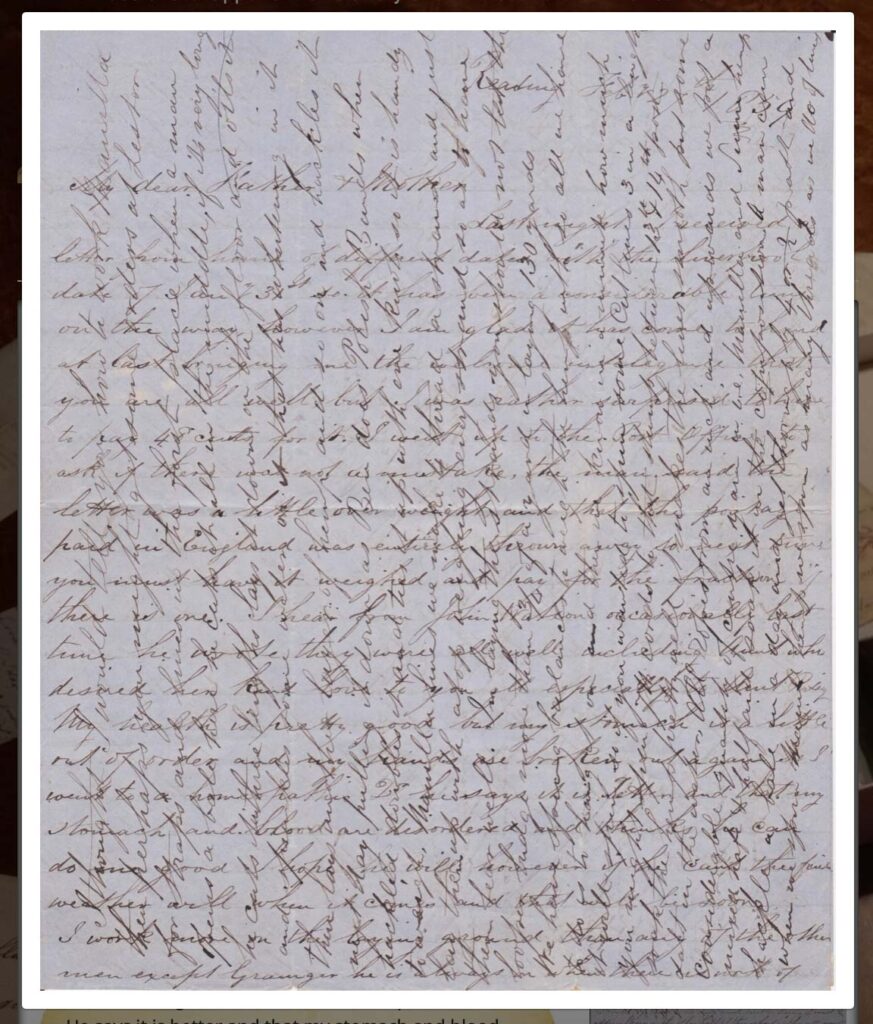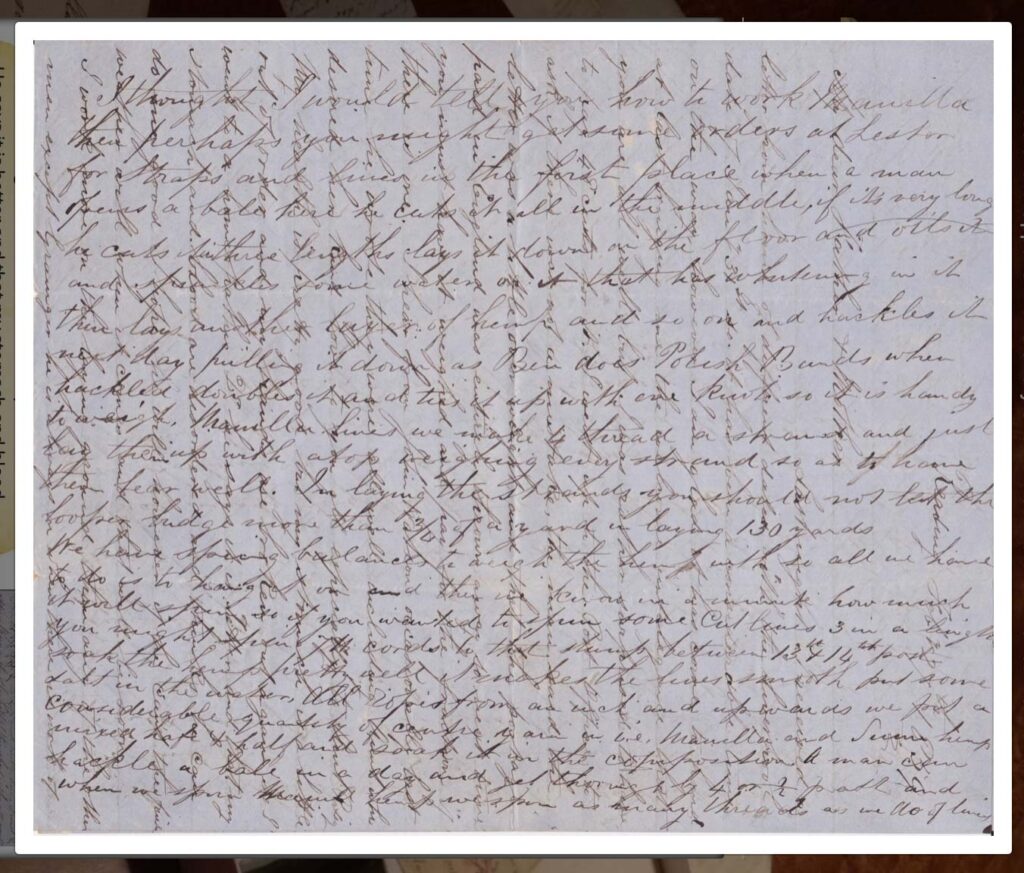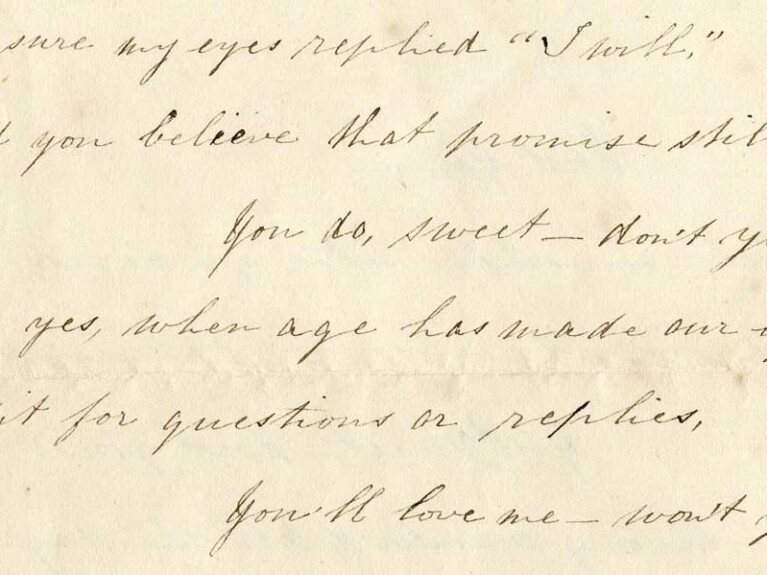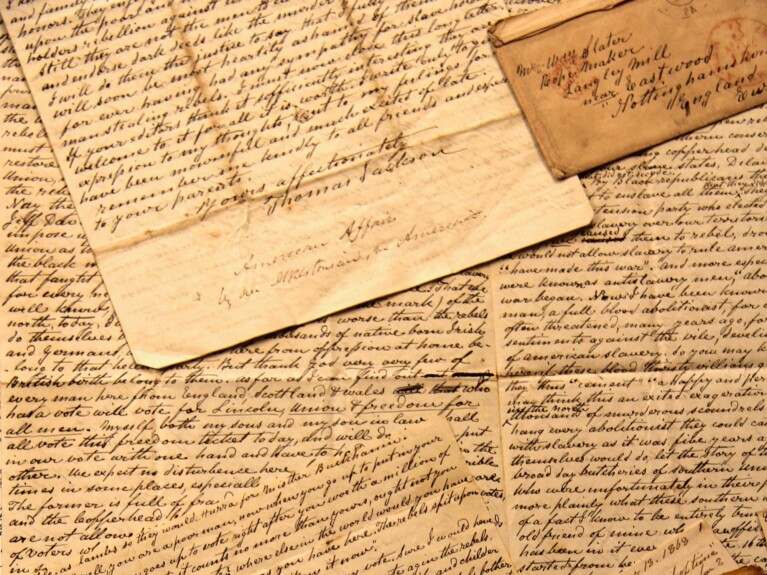One Page with Writing in Two Directions
This extract is from a much larger letter from William Slater while he was staying with Thomas Jackson and his American relatives. It was intended for his father back in England, fellow rope maker Caleb Slater who was TJ’s direct first cousin and received many of Thomas Jackson’s letters that make up this collection.
For the record, we learned from other family letters that Caleb hated having to transcribe such cross hatched letters almost as much as the current Ambassadors do!

After you have done your best to transcribe this page, you can compare your version with ours.
Reading Feb 27th, 1859
My dear Father & Mother
Last night I received a letter from home of different dates with the Liverpool date of Jan 31st so it has been a considerable time on the way, however I am glad it has come to hand at last bringing me the welcome intelligence that you are all well, but I was rather surprised to have to pay 48 cents for it. I went up to the Post Office to ask if there was not a mistake, the man said the letter was a little over weight and that the postage paid in England was entirely thrown away so the next time you must have it weighed and pay for the fraction if there is one. I hear from John Watson occasionally last time he wrote they were all well including Aunt who desired her kind love to you all especially to Aunt Riley My health is pretty good but my stomach is a little out of order and my hands are broken out again so I went to a homeopathic Dr
He says it is better and that my stomach and blood are disordered and thinks he can do me good I hope he will however if he can’t then fine weather will when it comes and that will be soon I work more on the laying ground than any of the other men except Grainger he is always on when there is work of
Thomas Jackson wrote pages of letters in this crosshatch style. See how much of page 6 you can transcribe!

How did you do? Compare with our version below:
I thought I would tell you how to work Manilla then perhaps you might get some orders at Leston for Straps and lines in the first place then a man opens a bale here he cuts it all in the middle, if it’s very long he cuts three lengths lays it down on the floor and oils it and sprinkles some water on it that has whitening in it then lays another layer of hemp and so on and hackles it next day pulling it down as Ben does Polish Bands when hackled doubles it and ties it up with one knot so it is handy to weigh, Manilla lines we make 4 thread a strand and just lay them up with atop weighing every strand so as to have them tear well. In laying the strands you should not let the looper budge more than 3/4 of a yard in laying 130 yards. We have spring balance to weigh the hemp with so all we have to do is to hang it on and then we know in a minute how much it will will spin so if you wanted to spin some cut lines 3 in a length You might spin the cords to that stump between 13th & 14th posts soak the hemp pretty well it makes the lines smooth put some salt in the water, All the ropes from an inch and upwards we put a considerable quantity of centre yarn inline, Manilla and Some hemp mixed half & half and soak it in the composition. A man can hackle a bale in a day and get through by 4 or 1/2 past and when we spin Manilla hemp we spin as many threads as we do of lines
Ambassador Notes
The first side of the first page makes clear that there was great sensitivity about the costs of postage.
The second side does not follow on from the first because the habit was to write several pages one way, and only then to turn the pages round and start writing at right angles to the first. Thus, as here, the topics on the second side of the first page may relate to something quite different from the start of the letter.
This second page shows how these detailed letters in the Thomas Jackson collection cover many dimensions. Here you see historic accounts of rope making in America at the time.

